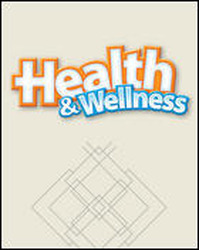
Health & Wellness © 2008Unit 2: Mental and Emotional HealthWebQuest ProjectsBuilding Self-Esteem And Self-RespectIntroduction In this WebQuest, students will use the Internet to learn about the importance of self-esteem and self-respect. They will create a list of ten actions they can take to improve their own self-esteem and then describe how each action will benefit their self-image, health, and overall well-being. Task Before starting their internet research, students will read six questions about self-esteem and self-respect. Using these questions as a starting point, they will use the resource Web sites to investigate the sources of self-esteem, the effects of high and low self-esteem, and actions a teen can take to improve his or her self-image and self-esteem. As students learn more about self-esteem, they will create lists of ten things they can do to improve their own self-esteem. For each item on the lists, students should describe how the action will improve their self-image. Objectives
Resources Students will use the internet links given in order to research the definition and sources of self-esteem. They will identify different actions and behaviors that lead to both low self-esteem and high self-esteem. They will discover how outside sources, such as family, media, and peers, can positively or negatively influence their self-image. By using these Web sites as a springboard for ideas, students then will create a list of ten actions they plan to take in order to improve their own self-esteem. Time Two days to research the Web sites and create their lists Process Before students begin their research on the Web sites, have them review the list of questions provided on the student page. Ask them to keep these questions in mind while reviewing the information on the resource Web sites. These concepts will help students focus on the core influences on and effects of both high and low self-esteem. You may want to discuss these questions as a class prior to beginning the internet research. Answers are as follows:
Students then will create a list of actions to improve their self-esteem. Encourage them to think beyond the resources given and to use any other ideas they feel would help them improve their own self-image. Students also will need to provide a description of how each action will improve self-esteem. Evaluation You may assign 10 points to each of the ten items for a total of 100 possible points. You may rate each activity by the following scale: Excellent: 9-10 points; Very Good: 7-8 points; Good: 5-6 points; Satisfactory: 3-4 points; Poor: 1-2 points; and Unsatisfactory: 0 points. The review should include both the action the student plans on taking and the description of how this action will improve his or her self-esteem. Conclusion After researching the information on the resource Web sites, students should have a good understanding of self-esteem and its effects on a person's quality of life. They should be able to create a list of personalized activities that will help them improve their self-esteem. Also, they should have a better understanding of the importance of respecting others and earning respect from others by working to maintain a positive self-image. |  |















